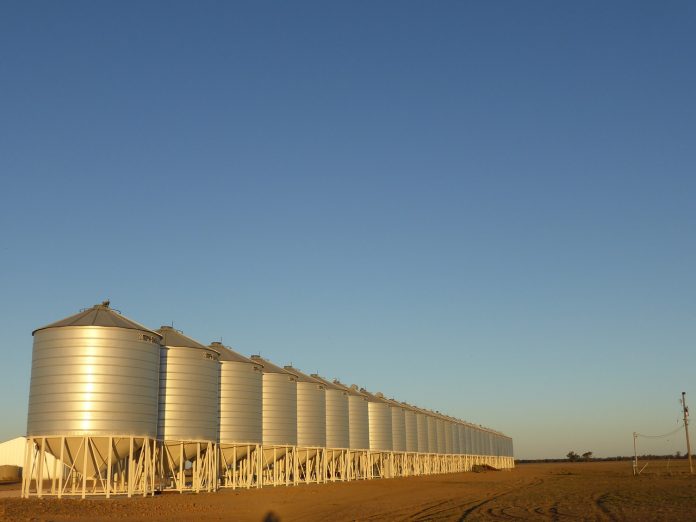It has to be good news that grain markets have bounced a little, both going into and coming out of the latest U.S. Department of Agriculture reports. Uncle Sugar gave us the World Agricultural Supply and Demand Estimates March 8, and there was little in them of note.
Significantly, the market, which has been sick for months and keeps finding new lows, rebounded a little. Maybe no news settled the markets a little, and we can hope we have seen the worst.
Of course, the next big news is the USDA Prospective Planting Reports. If I am right, they come out March 29 this year. They normally are released March 31, whenever that is, but it comes on Sunday this year, and that’s a no-no. Civil servants only work on weekdays.
We are already seeing projections for acres and prices for the next crop, for 2024-2025. That means another round of guessing what the acres will look like and then guessing what USDA will say it looks like. The market will start to trade the USDA numbers and traders will fade those numbers toward their own predictions.
The WASDE report was said to be neutral for corn and soybeans and bearish for wheat. In fact, all three major commodities had gains March 11, and wheat gained 9 1/2 cents! Corn was up only two cents, after losing a couple at the close. Soybeans were up 17 3/4 cents.
I expect the market to trade erratically for the next couple of weeks until the Prospective Planting Report puts some reality into the market. We can expect corn and beans to act against each other, and I have no theory for wheat. I will be a lot smarter a few days after the report, just like everybody else.
The best guesses I have seen for acres come from a Farm Progress Daily report by Whitney Haigwood. She quotes Will Maples, an assistant professor from Mississippi State, who expects a large shift from corn to soybeans in the 2024 planting.
In 2023, the U.S. put in 94.6 million acres of corn and 83.6 million of soybeans. The professor expects 88 million acres of soybeans to be planted this spring. It used to be that the plantings did not change much, but that has not been true in recent years.
In 2018, we planted more soybeans than corn, but only for that year. Between 2000 and 2022, soybean acres increased by 18%, while corn acres only increased by 12%. At the same time, wheat acres decreased by 22%.
Pushing the cut to corn plantings is the 60% growth in year-end stocks this year to two billion bushels. Meanwhile, soybeans have only 240 million bushels of carryout, and that is below pipeline supplies. We have already seen some imports booked into the Southeast. It should be noted that Professor Maples used these numbers in a Dec. 6 meeting in Mississippi, so they are fairly old.
Maples says that we could see an average of $4.85 a bushel for corn and $12 for soybeans. He points out that $6 corn is as high as 86% of the prices we have seen in the last 15 years. Soybeans for $14 is higher than 95% of all the prices for the same period.
Looking at prices, we see May corn futures are in a four-day uptrend. Our recent low was at $4.08 3/4 Feb. 26. The high came March 8 at $4.43, with a close at $4.41 for a two-cent pickup. May soybeans have picked up 56 1/2 cents since the $11.28 1/2 on Leap Day. The high came March 8 at $11.85. We have actually lost nearly a nickel to $11.79 1/4 in the overnight session as this is was being written at midnight Tuesday morning.
Chicago wheat futures closed at $5.47 1/4 March 11, with a gain of almost a dime. In the overnight going into March 12, we are off 1 1/4, at $5.46.
Wheat wanted to rally with the other grains but was hobbled by a report that China, which likes our SRW cookie wheat, canceled 9.7 million bushels. That is not their first cancellation and some think the last 30 million bushels on the books will never be delivered. That is a tough pill for a weak wheat market to swallow.
Living in Alabama
All that talk about a professor from Mississippi makes me want to pass onto you some impressions of life in Huntsville, Alabama. Many Americans don’t realize that Huntsville, where I now live, is called Rocket City because of the huge rocket business here since Werner Von Braun arrived after World War II.
Huntsville has the highest average education of any city in the United States, and every second person I meet is an engineer, usually on a secret project he can’t talk about. One friend told me that, when he gets asked what he does for a living, he says that he counts toilets. My son-in-law works on one of those projects, and I tell people he is working on the Mars lander. He does not, but I don’t know what it is he actually does.
When most people think of Alabama, they don’t think of aerospace. They think of poor rural South. When I first came here, I was asked if I knew what the motto of Alabama is. The answer, “At least we’re not Mizzippi!” A former pastor, from Warren, grew up in Arkansas. He said their motto was also about Mississippi!











